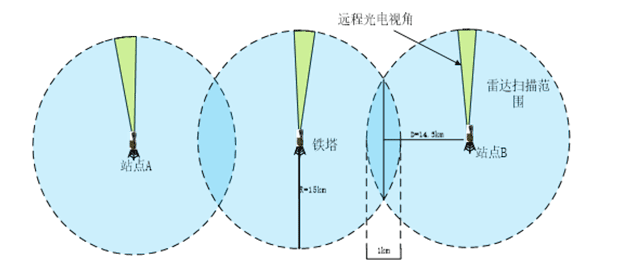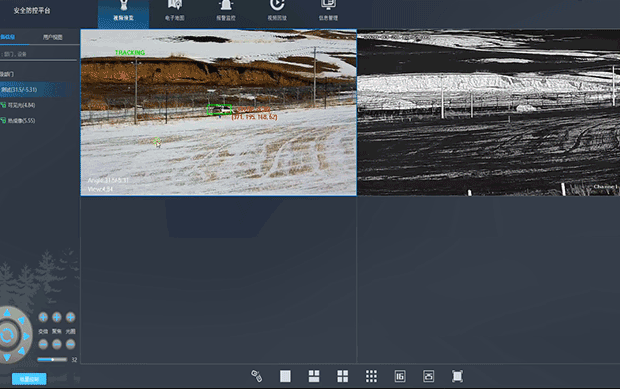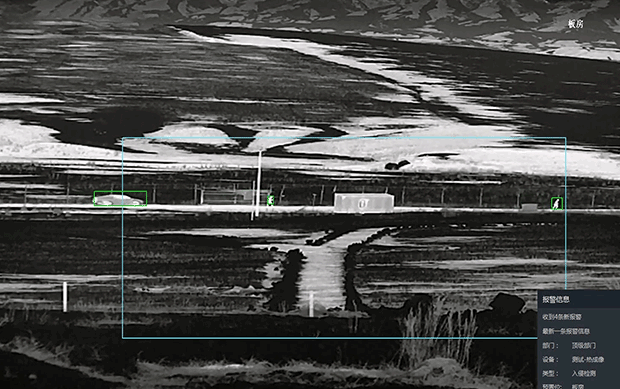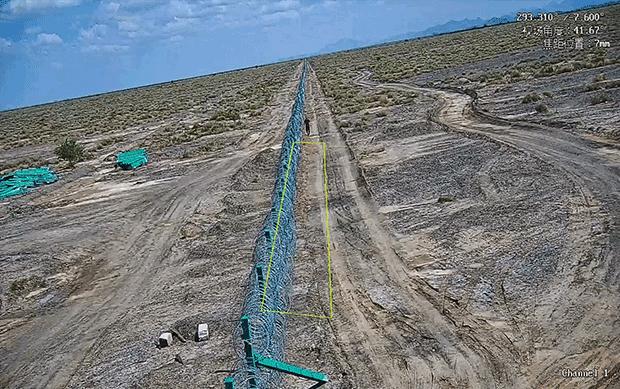
Due to the remote location and inconvenient transportation of certain key areas, as well as the long perimeter distance and wide coverage area, it takes a long time for duty personnel to respond from alarm to on-site disposal in the event of an intrusion. Therefore, it is necessary to set up warning belt style deep protection measures around the perimeter. To this end, Hope-wish have launched an integrated intelligent perimeter defense system solution that can detect targets such as vehicles and crowds, and provide early warning when targets are discovered. It can predict the number, scale, and direction of the targets and take corresponding warning measures when necessary.

The construction goal of the integrated intelligent perimeter defense system of Thunder Vision is "early warning, extension of defense zones, multi technology integration, and zoning configuration". It adopts the deployment method of relay along the perimeter without blind spots, and after completion, realizes the full range of key area perimeters that can be felt and known, solves the problem of warning for ultra long distance perimeters, reduces the probability of false alarms, false alarms, and missed alarms, and achieves intelligent detection, visualized alarm situations, and automated management through linkage with front-end videos.

The integrated intelligent perimeter defense system of Thunder Vision consists of a one-dimensional phased array radar, a long-distance electro-optical turntable, a protective camera, a transmission subsystem, and a display and control subsystem.
1. The radar adopts solid-state active phased array technology, which is suitable for target detection, distance aggregation, altitude measurement, velocity fitting, target point extraction in complex environments, and has the ability to perform large-scale azimuth search and airspace coverage. Through the integration of one-dimensional servo turntable and long-distance photoelectric turntable, a coaxial design deployment is achieved to achieve high-precision guidance and positioning of targets without blind spots or obstructions.
2. The long-distance photoelectric turntable integrates multiple spectrum detection modules such as high-definition visible light cameras, refrigeration and thermal imaging devices. According to the needs, modules such as laser ranging, positioning navigation, electronic compass, automatic tracking, and intelligent analysis can be optionally installed to achieve the functions of all-weather, all time, and all dimensional discovery, positioning, tracking, recognition, and tracking of targets.
3. The protective camera mainly realizes blind spot compensation and protection monitoring for close range monitoring of front-end equipment.
4. The transmission subsystem mainly includes wired fiber optic transmission and wireless microwave transmission.
5. The display and control subsystem mainly includes backend site monitoring stations, sub control centers, and higher-level command and control centers. Among them, the deployment of client hosts in the site monitoring station mainly realizes the display and control of a single set of front-end devices. The sub control center deploys clients, servers, operating devices, decoding devices, etc. The client deploys security prevention and control platform software, which integrates management, control, and display. The server mainly integrates radar target data and electro-optical turntable target data for fusion processing, while storing forensic information. The superior command and control center can receive data pushed by the sub control center.

The sub control center is equipped with a security prevention and control platform software that can receive radar and electro-optical data, and provide real-time display of data based on embedded GIS systems and control operations for various devices. It can display the target's trajectory and video, complete video recording and playback.
The radar photoelectric linkage security prevention system has strong detection and monitoring capabilities, relying on radar scanning to discover targets and guide photoelectric recognition to confirm intrusion targets. High degree of intelligence, with high unmanned duty capability, can effectively reduce labor costs. The combination of radar detection and photoelectric secondary target confirmation effectively reduces false alarm rates, improves safety protection efficiency, and enhances effective disposal efficiency.
On the basis of integrating radar and photoelectric detection systems, the system fully utilizes AI intelligent technology to achieve functions such as search and warning, video surveillance, target tracking, classification and recognition, threat judgment, etc. in key areas through intelligent analysis functions.
In this system, the radar and optoelectronics adopt an integrated coaxial design, which has the advantages of:
1) Reduce the difficulty of calibration and ensure the accuracy and effectiveness of radar electro-optical linkage;
2) There is no obstruction between the radar and optoelectronic subsystems, and no blind spots will be formed for surveillance;
3) It can avoid the need for regional segmentation compensation caused by separate deployment.


Intrusion detection in key areas